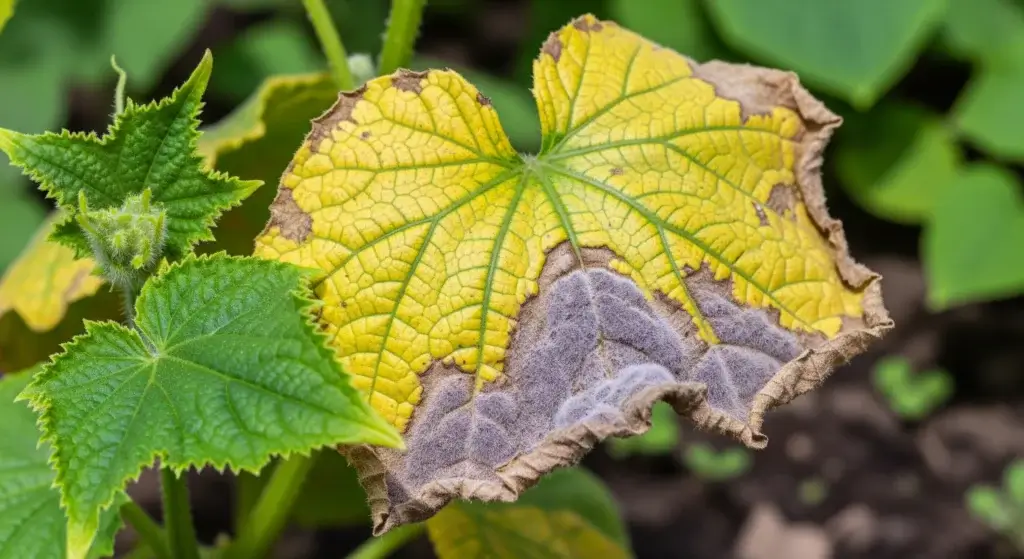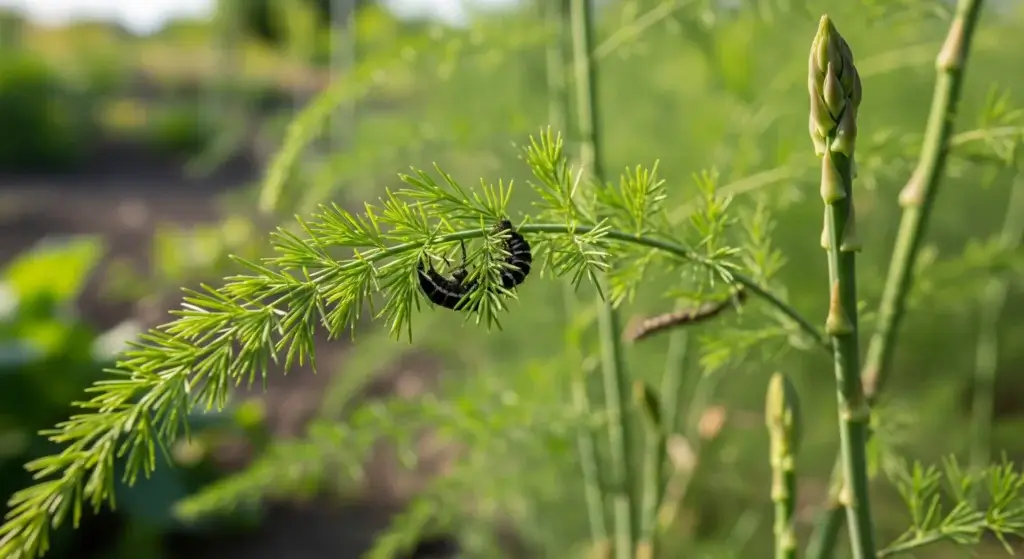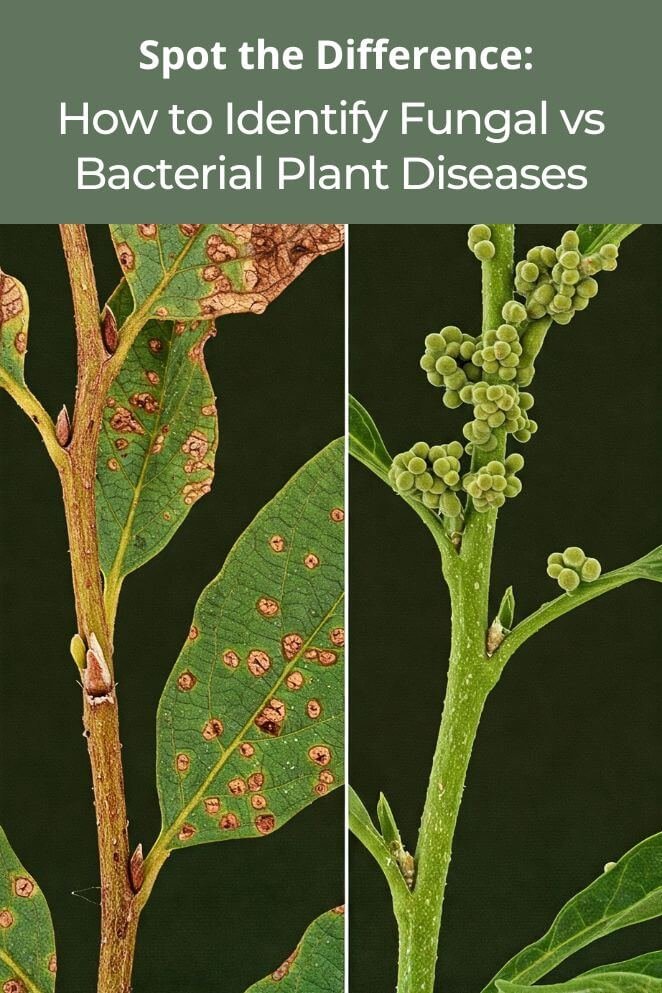
Your garden might not be auditioning for The Last of Us, but plant diseases can still turn your thriving green babies into a withering mess.
Whether you’re growing heirloom tomatoes or baby fiddle-leafs, not all plant problems come from the same villain.
Some are sneaky fungi, others are messy bacteria—and if you treat one like the other, you might just end up fueling the drama.
In this no-nonsense guide, we’ll break down how to spot the difference between fungal and bacterial plant diseases (think CSI: Garden Unit), decode their symptoms, and give you the tools to fight back—like a plant-savvy superhero with a watering can.
Why It Matters: Know Your Enemy to Win the War
When your plants start looking sad, droopy, or like they’ve been cast in a horror movie, it’s time to play Plant Disease Detective.
The twist? You can’t fix what you don’t understand.
Here’s the deal:
- Fungi and bacteria are not the same beast—so spraying the wrong treatment is like trying to fight zombies with a water gun.
- Some bacterial infections are pure villains—no cure, just rogue cells spreading chaos. You’ll need to remove and destroy infected plants like they’re the bad apples in a superhero squad.
- Misdiagnosing leads to chaos—wrong treatment, wasted money, and your healthy plants may end up collateral damage.
- Smart diagnosis = saved time, money, and your green babies.
Whether you’re nurturing a windowsill herb jungle or running a backyard farm that could rival a Stardew Valley setup, knowing what you’re fighting gives you the upper hand.
- Read also: Beat the Blight: Identifying Fungal Diseases of Eggplant
- Read also: The Silent Saboteurs: Unveiling Fungal Diseases of Cabbage
What Causes Plant Diseases?
Think of plant diseases like the villains of a gardening soap opera.
Most of the time, the drama comes from one of these three:
- Fungi – These are the drama queens of the plant world. They spread fast via air, water, soil, or your unwashed pruning shears. Think powdery mildew, rusts, and blights.
- Bacteria – Tiny troublemakers that sneak in through wounds or pores. They’re masters of infiltration—one nick in a leaf, and they’re in like hackers in a spy movie.
- Viruses – Rare, but when they show up, they go full Avengers: Infinity War. Often incurable, often spread by pest sidekicks like aphids or whiteflies.
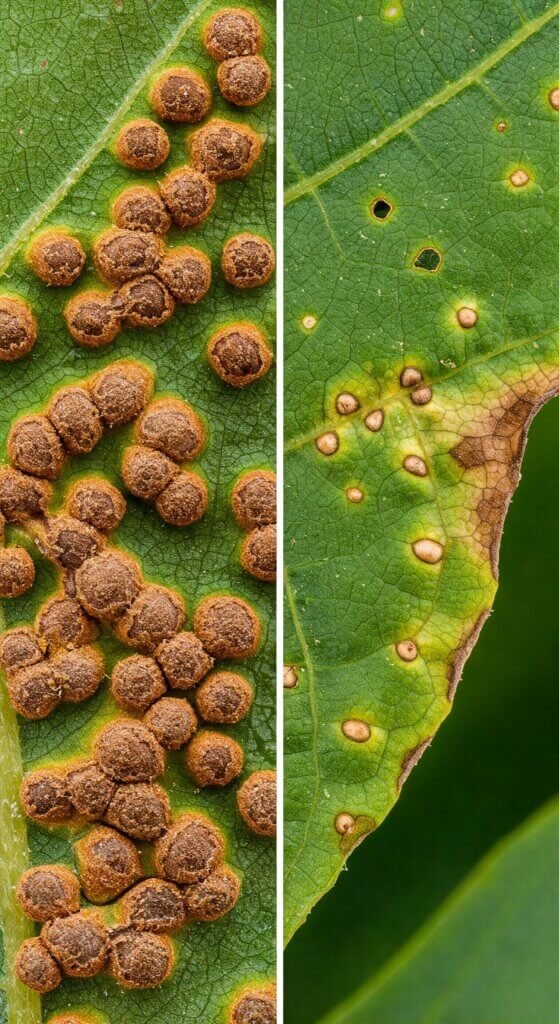
Fungal vs. Bacterial Plant Diseases: Key Differences
Here’s a side-by-side comparison to help you spot the difference:
| Feature | Fungal Diseases |
Bacterial Diseases
|
| Cause | Fungi (spores, molds, mildews) |
Bacteria (microscopic, single-cell organisms)
|
| Spread | Airborne spores, water splash, soil |
Water, insects, tools, plant wounds
|
| Leaf Symptoms | Powdery or fuzzy coating, leaf spots with rings or borders |
Water-soaked lesions, greasy-looking spots
|
| Stem/Branch Symptoms | Moldy growth, cankers, wilting |
Soft rot, oozing fluid, sunken lesions
|
| Growth Conditions | Thrive in humid, wet conditions |
Favor warm, wet environments
|
| Control | Fungicides, pruning, dry conditions |
Sanitation, copper sprays, plant removal
|
Common Symptoms of Fungal Plant Diseases
Fungal plant diseases are basically the uninvited guests of your garden party.
They sneak in, multiply like gremlins in a rainstorm, and leave your plants looking like extras from The Last of Us.
Examples of fungal diseases
- Powdery mildew – Looks like your plant got dusted with flour.
- Downy mildew – Mildew’s cooler, slimier cousin.
- Leaf spot (Septoria, Anthracnose) – Freckles of doom.
- Rust – Not just for old cars anymore.
- Botrytis (gray mold) – Like your strawberries grew beards.
- Root rot (Pythium, Phytophthora) – The silent killer under the soil.
Signs to look for
Look out for these telltale signs of fungal funkiness:
- Circular spots that look like tiny crop circles (bonus points for yellow halos)
- White or gray fuzz growing on leaves like your plant’s sporting a new coat
- Leaves curling, yellowing, or bailing early
- Wilting even though the soil feels like a wet sponge
- Tiny mushrooms or weird growths popping up near the base? That’s root rot waving hello.
Treatment tips for fungal diseases:
- Use fungicides wisely – Organic or chemical, follow directions like you’re cooking from The Great British Bake Off.
- Let it breathe – Give your plants space. Cramped quarters are a fungal rave.
- Water smart – Hit the soil, not the leaves. No surprise showers from above.
- Prune & toss – Cut off infected bits and trash them. Composting infected leaves is like inviting zombies to brunch.
- Neem oil & sulfur spray – Think of them as the Force fields for your flora.
Common Symptoms of Bacterial Plant Diseases
Bacterial plant diseases are like the Breaking Bad villains of the garden world—less common than their fungal cousins, but way more chaotic when they show up.
Once they settle in, it’s damage control time.
Examples of bacterial diseases
- Bacterial leaf spot – Looks like your plant caught chickenpox.
- Fire blight – Your fruit trees suddenly look like they got scorched in Game of Thrones.
- Bacterial wilt – One minute it’s fine, the next it’s face-down like it fainted in a soap opera.
- Crown gall – Plants growing strange lumps like they’ve joined the X-Men.
- Soft rot – When your veggies melt into a stinky mess… you know it’s game over.
Signs to look for
- Greasy, water-soaked patches on leaves (like plant sweat stains)
- Yellowing, but with weird, uneven edges
- Oozing goo from stems or fruit (gross but classic)
- Bad smell coming from rot—like your plant forgot deodorant
- Cankers and collapsed, mushy stems
- Dramatic wilting during hot days, even with good watering
Treatment tips for bacterial diseases
- Rip it out – If it’s infected, remove it like it’s the zombie in the group.
- Stay dry – Don’t mess with plants when they’re wet—bacteria love splash zones.
- Sterilize tools – Treat your shears like surgical equipment. Alcohol wipes or bleach between cuts.
- Copper-based sprays – These don’t cure the disease, but they can slow it down if applied early.
- Crop rotation – Don’t plant the same stuff in the same spot every year—it’s like giving bacteria a second chance.
- Pick smart plants – Choose disease-resistant varieties like you’re casting for a survival reality show.
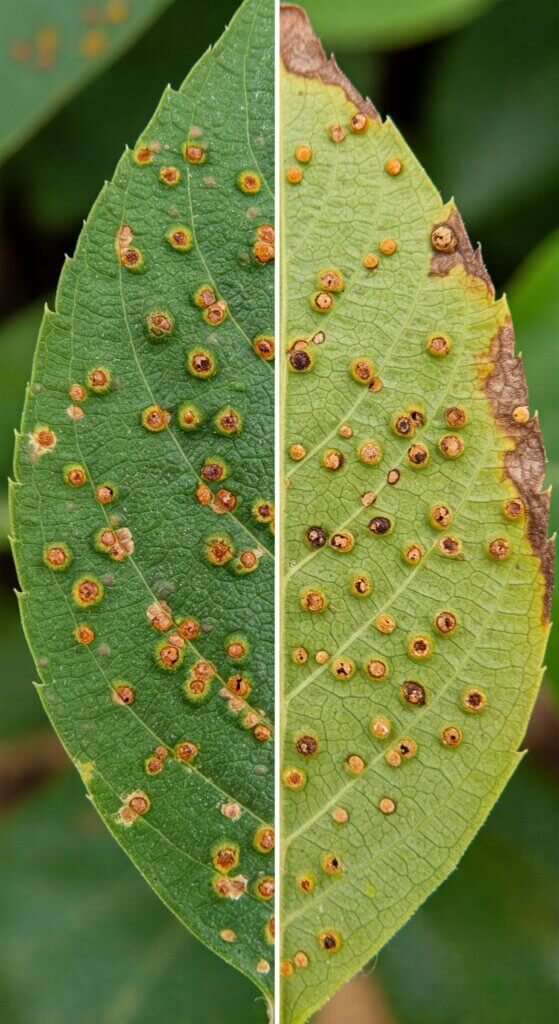
Symptoms That Look Similar (But Aren’t)
Sometimes, your plants look like they’ve caught a bad case of fungal or bacterial disease, but in reality, they’re just having a bad day thanks to other sneaky culprits.
Let’s break it down:
Nutrient deficiency?
Yellow leaves don’t always scream bacteria—sometimes it’s just your plant needing a little TLC in the nutrition department, especially nitrogen.
It’s like your plant is on a low-carb diet and feeling hangry.
Pest damage?
Aphids and thrips are like the Joker to your plant’s Batman—causing chaos with leaf curling, wilting, and even some weird growths.
They’re tricky little pests, but no need to panic!
They’re just doing what they do best.
Environmental stress?
Heat waves, droughts, or soggy soil can make plants act like they’re in a Survivor episode—curling up, looking sick, and acting out.
But really, they’re just stressing over their living conditions.
Diagnosis: Always Check the Other Culprits First
Before you blame the fungi or bacteria, make sure it’s not an abiotic (non-living) stressor causing the drama.
It’s like the “who done it?” mystery—rule out the easy suspects first before jumping to conclusions!
Tools to Help You Diagnose Plant Diseases
If you’re still unsure who’s behind the plant mayhem, try these trusty sidekicks:
Apps:
- Plantix – Like your personal garden assistant.
- PictureThis – Snap a pic, and it’ll tell you what’s wrong—kind of like Shazam for plants.
- Leafsnap – Identify plants and diseases, all with a swipe—less magic, more science.
Test kits
Want to go full CSI? Use rapid test kits that can identify bacterial or fungal culprits in a flash.
Local extension services
If you’re really stumped, call in the experts.
Your local agricultural extension office is like the Doctor Strange of plant health—they’ve got the tools, the knowledge, and the lab testing to sort things out.
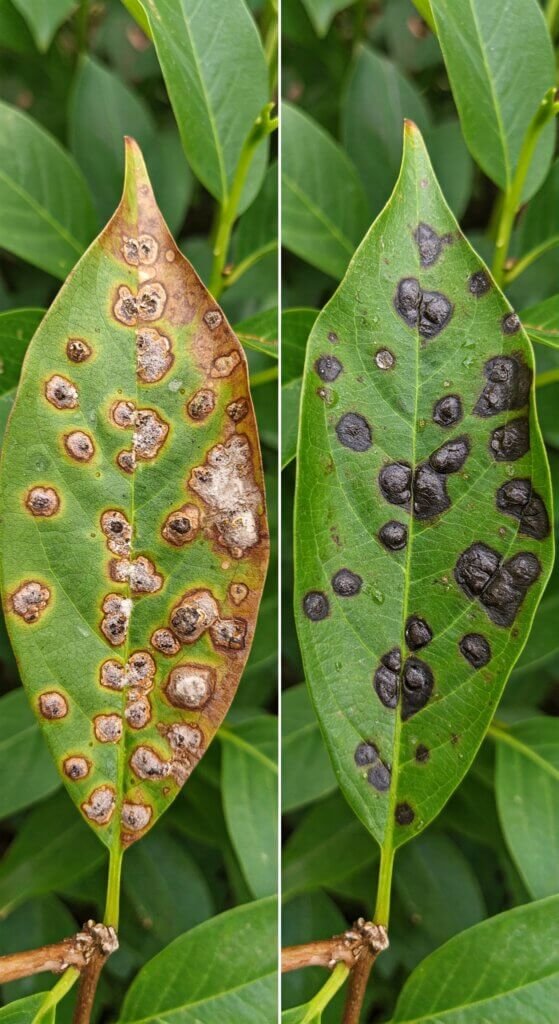
Preventing Future Plant Disease Outbreaks
Let’s face it—plant diseases are like surprise plot twists in a bad soap opera.
One minute your garden’s thriving, the next it’s a scene from The Last of Us.
But don’t worry, with these 10 pro tips, you’ll be running a disease-free, drama-free plant paradise.
Rotate Crops yearly to avoid soil-borne pathogens
Plant the same thing in the same spot every year? That’s how soil-borne villains set up camp.
Mix it up yearly like you’re remixing your Spotify playlist.
Buy certified disease-free seeds or seedlings
Only buy certified disease-free seeds or seedlings.
If it doesn’t have receipts (or a tag), don’t trust it—just like that suspicious avocado at the back of the fridge.
Sterilize tools regularly with bleach or alcohol
Clean your tools with bleach or alcohol.
Think of it as giving your pruning shears a shot of hand sanitizer before they go snipping.
Water in the morning to let leaves dry quickly
Water in the a.m. so leaves have all day to dry off.
Wet leaves at night = perfect horror movie setting for fungi.
Use mulch to prevent water splash that spreads spores
Mulch stops dirty splash zones.
No mulch? You’re basically letting spores crowd surf into your garden beds.
Control pests, which can transmit bacteria
Pests are Uber drivers for bacteria.
Keep them off your plants unless you want an uninvited microbial party.
Avoid overcrowding plants to improve airflow
No one likes being crammed at a concert—and neither do your veggies.
Space them out so they can breathe, grow, and vibe.
Clean up plant debris at season’s end
At season’s end, clean up dead leaves and stems.
That mess isn’t nostalgic—it’s a five-star hotel for overwintering pathogens.
Quarantine new plants before adding them to your garden
New plant? Don’t toss it straight into your leafy family.
Give it a week or two solo time—just in case it brought cooties.
Choose resistant varieties when available
Whenever possible, go for disease-resistant varieties.
It’s like choosing Iron Man over a dude in a tinfoil suit.
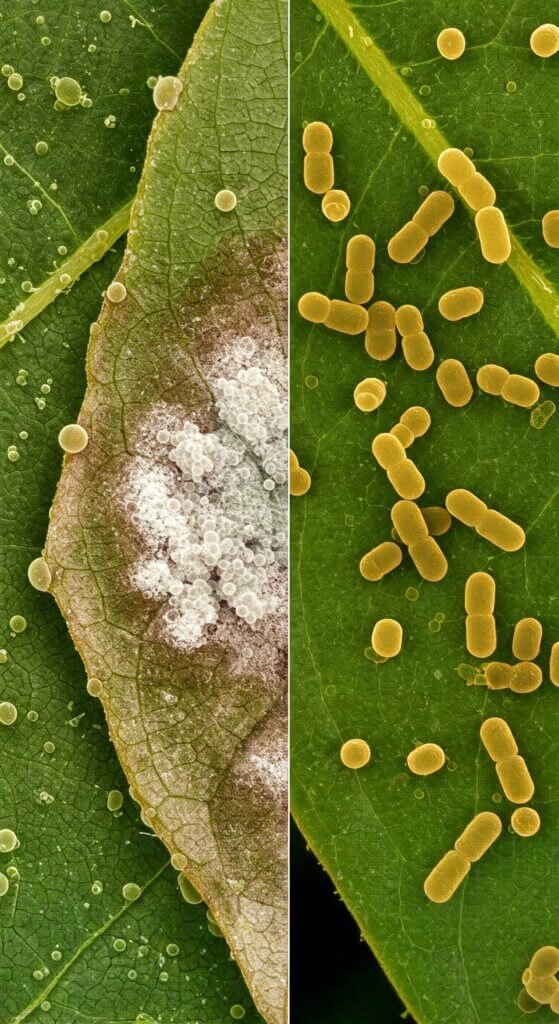
Quick Reference: Telltale Symptoms Cheat Sheet
| Symptom | Likely Culprit |
| Powdery coating |
Fungal (Powdery mildew)
|
| Yellow halo leaf spots |
Fungal (Leaf spot)
|
| Greasy or wet-looking lesions |
Bacterial (Leaf spot)
|
| Gray mold on fruit | Fungal (Botrytis) |
| Wilting despite watering |
Bacterial (Wilt) or Fungal (Root rot)
|
| Foul smell and soft tissue |
Bacterial (Soft rot)
|
- Read also: Bacterial Wilt of Cucumber: Essential Tips For Every Gardeners
- Read also: A Comprehensive Guide: Controlling Bacterial Spot on Tomatoes
Conclusion: Diagnosis Is the First Step to Recovery
Plants get sick too—and if you want to play plant doctor, you’ve gotta know your villains.
Fungal diseases are like clingy exes: they show up everywhere, spread fast, and love humidity.
Bacterial ones? Sneaky and ruthless, like a surprise plot twist in Breaking Bad—once they hit, it’s often too late.
- Watch for mold, spots, oozing, and smells that would scare off a zombie.
- Sterilize tools like you’re prepping for surgery.
- Water smart (no plant showers after dark).
- Use apps, test kits, or even call your local plant nerds (aka extension offices).
And remember: prevention is better than curing a garden full of drama. So channel your inner plant whisperer, stay sharp, and protect your leafy kingdom like it’s the final round of The Last of Us.

